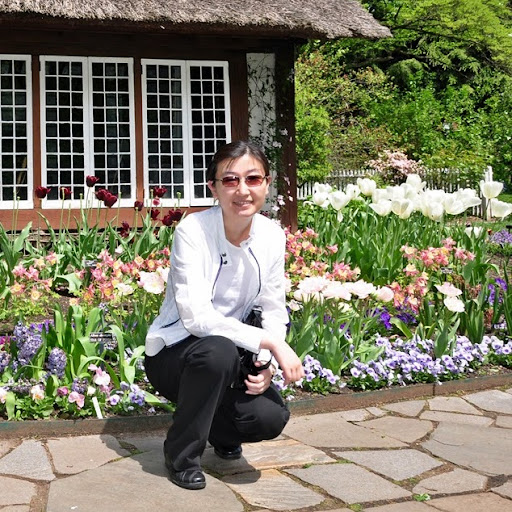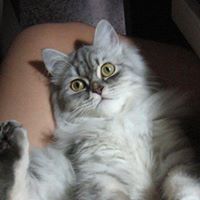Jing Y Huang
age ~49
from Stamford, CT
- Also known as:
-
- Jin G Huang
- Huang Jing
Jing Huang Phones & Addresses
- Stamford, CT
- 438 W 116Th St, New York, NY 10027
- 2 Washington Square Vlg, New York, NY 10012 • (212)3531318
- 4 Washington Square Vlg, New York, NY 10012 • (212)3531318
- 215 E 10Th St #21, New York, NY 10003
- 47 James Rd, Mount Kisco, NY 10549
- White Plains, NY
- Fort Lee, NJ
- Elmhurst, NY
- Germantown, MD
- Batavia, IL
Education
-
School / High School:University of Alabama
Languages
English
Ranks
-
Licence:New York - Currently registered
-
Date:2012
Specialities
Physical Therapy
Lawyers & Attorneys

Jing Huang - Lawyer
view sourceLicenses:
New York - Currently registered 2012
Education:
University of Alabama
Isbn (Books And Publications)


Inseparable Separation: The Making of China's Taiwan Policy
view sourceAuthor
Jing Huang
ISBN #
0815737580

Inseparable Separation: The Making of China's Taiwan Policy
view sourceAuthor
Jing Huang
ISBN #
0815737599
License Records
Jing Huang
Address:
New York, NY 10021
License #:
MD460326 - Active
Category:
Medicine
Type:
Medical Physician and Surgeon
Name / Title
Company / Classification
Phones & Addresses
GRAND PAIGE APPAREL INC
109 Lafayette St - 6, New York, NY 10013
1140 68 St, Brooklyn, NY 11219
256 W 38 St 4/F, New York, NY 10018
1140 68 St, Brooklyn, NY 11219
256 W 38 St 4/F, New York, NY 10018
T Q C CUTTING INC
270 W 38 St 12A Flr, New York, NY 10013
1140 68 St 1 Flr, Brooklyn, NY 11219
1140 68 St 1 Flr, Brooklyn, NY 11219
PERSONAL FASHIONS INC
150 Lafayette St, New York, NY 10013
TIAN LONG NY INC
Nonclassifiable Establishments
Nonclassifiable Establishments
48-09 108, Corona, NY 11368
4809 108 St, Corona, NY 11368
4809 108 St, Corona, NY 11368
Principal
JING'S FASHION TRADING INC
Business Services
Business Services
142 W 29 St, New York, NY 10001
(212)8680488
(212)8680488
Us Patents
-
Methods And Apparatus For Fast Adaptation Of A Band-Quantized Speech Decoding System
view source -
US Patent:6421641, Jul 16, 2002
-
Filed:Nov 12, 1999
-
Appl. No.:09/438932
-
Inventors:Jing Huang - Ossining NY
Mukund Padmanabhan - White Plains NY -
Assignee:International Business Machines Corporation - Armonk NY
-
International Classification:G10L 1700
-
US Classification:704250, 704230, 704249
-
Abstract:A method of performing speaker adaptation of acoustic models in a band-quantized speech recognition system, wherein the system including one or more acoustic models represented by a feature space of multi-dimensional gaussians, whose dimensions are partitioned into bands, and the gaussian means and covariances within each band are quantized into atoms, comprises the following steps. A decoded segment of a speech signal associated with a particular speaker is obtained. Then, at least one adaptation mapping based on the decoded segment is computed. Lastly, the at least one adaptation mapping is applied to the atoms of the acoustic models to generate one or more acoustic models adapted to the particular speaker. Accordingly, a fast speaker adaptation methodology is provided for use in real-time applications.
-
Image Subregion Querying Using Color Correlograms
view source -
US Patent:6430312, Aug 6, 2002
-
Filed:Dec 28, 1998
-
Appl. No.:09/221473
-
Inventors:Jing Huang - Ossining NY
Shanmugasundaram Ravi Kumar - San Jose CA
Mandar Mitra - Calcutta, IN
Wei-Jing Zhu - Ossining NY -
Assignee:Cornell Research Foundation, Inc. - Ithaca NY
-
International Classification:G06K 900
-
US Classification:382165, 382162
-
Abstract:A color correlogram ( ) is a representation expressing the spatial correlation of color and distance between pixels in a stored image. The color correlogram ( ) may be used to distinguish objects in an image as well as between images in a plurality of images. By intersecting a color correlogram of an image object with correlograms of images to be searched, those images which contain the objects are identified by the intersection correlogram.
-
Image Indexing Using Color Correlograms
view source -
US Patent:62467905, Jun 12, 2001
-
Filed:Dec 28, 1998
-
Appl. No.:9/221472
-
Inventors:Jing Huang - Ossining NY
Shanmugasundaram Ravi Kumar - San Jose CA
Mandar Mitra - Calcutta, IN
Wei-Jing Zhu - Ossining NY -
Assignee:Cornell Research Foundation, Inc. - Ithaca NY
-
International Classification:G06K 900
-
US Classification:382162
-
Abstract:A color correlogram is a three-dimensional table indexed by color and distance between pixels which expresses how the spatial correlation of color changes with distance in a stored image. The color correlogram may be used to distinguish an image from other images in a database. To create a color correlogram, the colors in the image are quantized into m color values, c. sub. i. . . c. sub. m. Also, the distance values k. epsilon. [d] to be used in the correlogram are determined where [d] is the set of distances between pixels in the image, and where dmax is the maximum distance measurement between pixels in the image. Each entry (i, j, k) in the table is the probability of finding a pixel of color c. sub. i at a selected distance k from a pixel of color c. sub. i. A color autocorrelogram, which is a restricted version of the color correlogram that considers color pairs of the form (i,i) only, may also be used to identify an image.
-
Sparse Maximum A Posteriori (Map) Adaption
view source -
US Patent:20140257809, Sep 11, 2014
-
Filed:May 22, 2014
-
Appl. No.:14/284738
-
Inventors:Vaibhava Goel - Chappaqua NY, US
Peder A. Olsen - Cortlandt Manor NY, US
Steven J. Rennie - Millwood NY, US
Jing Huang - Ossining NY, US -
International Classification:G10L 15/14
-
US Classification:704239
-
Abstract:Techniques disclosed herein include using a Maximum A Posteriori (MAP) adaptation process that imposes sparseness constraints to generate acoustic parameter adaptation data for specific users based on a relatively small set of training data. The resulting acoustic parameter adaptation data identifies changes for a relatively small fraction of acoustic parameters from a baseline acoustic speech model instead of changes to all acoustic parameters. This results in user-specific acoustic parameter adaptation data that is several orders of magnitude smaller than storage amounts otherwise required for a complete acoustic model. This provides customized acoustic speech models that increase recognition accuracy at a fraction of expected data storage requirements.
Medicine Doctors

Jing Huang, Brooklyn NY - PT (Physical therapy)
view sourceSpecialties:
Physical Therapy
Address:
65 Court St, Brooklyn, NY 11201
(212)9354000 (Phone)
(212)9354000 (Phone)
Languages:
English
Resumes

Jing Huang St. Louis, MO
view sourceWork:
Lab of Dr. Evan Sadler
2010 to 2013
Staff scientist Washington University
2009 to 2010
Young Scientist Program (YSP) Lab of Dr. Evan Sadler, Washington
2008 to 2010
Research Associate St. Louis Community College
St. Louis, MO
2009 to 2009
Guest Lecturer Lab of Dr. Evan Sadler
2006 to 2008
Postdoctoral Fellow Lab of Dr. Judith White
2000 to 2005
Graduate Student Laboratory Rotation Research
2000 to 2000
Graduate Student
2010 to 2013
Staff scientist Washington University
2009 to 2010
Young Scientist Program (YSP) Lab of Dr. Evan Sadler, Washington
2008 to 2010
Research Associate St. Louis Community College
St. Louis, MO
2009 to 2009
Guest Lecturer Lab of Dr. Evan Sadler
2006 to 2008
Postdoctoral Fellow Lab of Dr. Judith White
2000 to 2005
Graduate Student Laboratory Rotation Research
2000 to 2000
Graduate Student
Education:
University of Virginia
2005
Ph.D. in Biology Peking University
1999
M.D.
2005
Ph.D. in Biology Peking University
1999
M.D.
Skills:
cell biology, fluorescence microscopy, molecular biology, biochemistry, protein chemistry and protein purification

Jing Huang New York, NY
view sourceWork:
Aaron Diamond AIDS Research Center (ADARC)
Jul 2008 to 2000
Postdoctoral Fellow Albert Einstein college of Medicine (AECOM), Yeshiva University
Bronx, NY
Jun 2007 to Jun 2008
Postdoctoral Research Associate
Jul 2008 to 2000
Postdoctoral Fellow Albert Einstein college of Medicine (AECOM), Yeshiva University
Bronx, NY
Jun 2007 to Jun 2008
Postdoctoral Research Associate
Education:
Chinese Academy of Sciences
1998 to 2004
Ph.D. in Zoology
1998 to 2004
Ph.D. in Zoology
Skills:
ELISA, ELISpot, Multi-color flow cytometry, Cell sorting, Generate primary T cell line, Immunohistochemistry (IHC), IVIS imaging, Gene chimerization, Generate retro-lentiviral transducted cell line, Gene-targeting Construct, ES cell culture, Protein purification, Real-time PCR, Western blot. Southern blot, Cell signaling, Gene therapy Establish transgenic mouse model, Reconstitute human immune system in immunodeficient mice, Mouse colony maintenance, genotyping and phenotyping. BL-3 working experience, Construct and purify Adeno-Associated Virus (AAV), Lentivirus, Retrovirus

Jing Huang Corona, NY
view sourceWork:
NYU
Oct 2013 to Dec 2013
Academic Project : Disparity NYU
Oct 2012 to Dec 2012
Academic Project : Rocket Man NYU
Sep 2012 to Dec 2012
Academic Project : Animal Expedition
Oct 2013 to Dec 2013
Academic Project : Disparity NYU
Oct 2012 to Dec 2012
Academic Project : Rocket Man NYU
Sep 2012 to Dec 2012
Academic Project : Animal Expedition
Education:
New York University School of Engineering
Brooklyn, NY
2014
Bachelor of Science in Computer Science
Brooklyn, NY
2014
Bachelor of Science in Computer Science
Skills:
Languages: C/C++, C#, SQL, Java, PHP
Plaxo

jing yuan huang
view sourcemontreal, beijing, seattle
Googleplus

Jing Huang
Lived:
New York, NY, USA
Work:
Morgan Stanley
Education:
Columbia University

Jing Huang
Education:
The University of Hong Kong - Economics & Finance, Peking University - Economics & Finance

Jing Huang
Education:
University of California, Santa Barbara

Jing Huang
Education:
Wuhan University - TranslationInterpretation

Jing Huang
Education:
San Francisco State University

Jing Huang
Education:
Carnegie Mellon University

Jing Huang
Education:
Purdue University

Jing Huang
Education:
Beijing Normal University
Flickr
Classmates

Jing Huang
view sourceSchools:
Sacred Heart High School Los Angeles CA 1990-1992, Shanghai American School Shanghai China 1992-1993

Jing Huang
view sourceSchools:
International School Beijing China 1991-1995
Community:
Richard Capps

Jing Huang
view sourceSchools:
Lakeside High School Ashtabula OH 2002-2006

International School, Bei...
view sourceGraduates:
Jing Huang (1991-1995),
Huang Bo (1998-2002)
Huang Bo (1998-2002)

Richard Ivey School of Bu...
view sourceGraduates:
Jing Huang (2000-2002),
Donald Hoffhine (1972-1974),
Fred Berlet (1951-1953),
Adrian Visentin (1984-1986),
Bryson Eldridge (1977-1979)
Donald Hoffhine (1972-1974),
Fred Berlet (1951-1953),
Adrian Visentin (1984-1986),
Bryson Eldridge (1977-1979)

Lakeside High School, Ash...
view sourceGraduates:
Jing Huang (2002-2006),
Sara Teston (2003-2007),
Latasha Williams (2003-2007),
Melissa Roberts (2001-2005),
Jerome Warren (2006-2010)
Sara Teston (2003-2007),
Latasha Williams (2003-2007),
Melissa Roberts (2001-2005),
Jerome Warren (2006-2010)

Shanghai American School,...
view sourceGraduates:
Jing Yi Huang (1992-1993),
Jianyi Liu (1997-2001),
Taha Mir (1992-1996),
Jackie Chen (1990-1995),
Donald Landwehr (1936-1937)
Jianyi Liu (1997-2001),
Taha Mir (1992-1996),
Jackie Chen (1990-1995),
Donald Landwehr (1936-1937)
Youtube

Jing Jing Huang
view source
Amy Jing Huang
view source
Huang Jing
view source
Jing Jing Huang
view source
Jing Hung Huang
view source
Ng Jing Huang Jing
view source
Carla Jing Huang
view source
Jing Huang
view sourceGet Report for Jing Y Huang from Stamford, CT, age ~49












